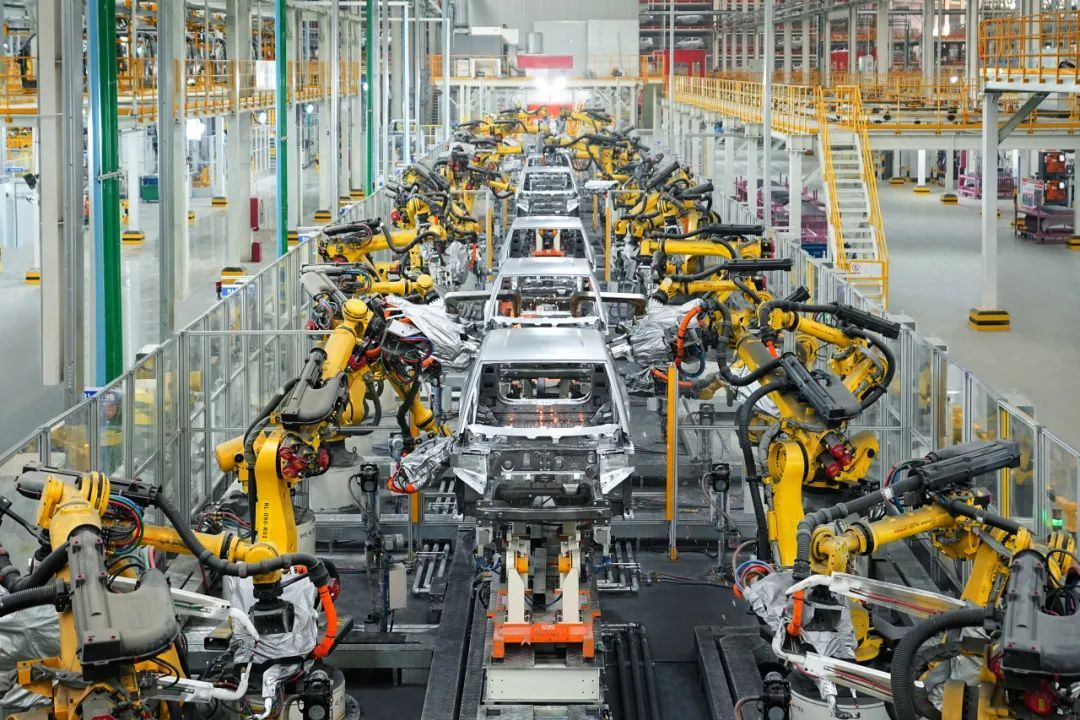
In 2024, the automotive industry is evolving with updated and new car models making their debut. Among them, prices are changing quickly with 51 cars already experiencing price reductions this year - half as many as in 2023. Plug-in hybrid and pure electric vehicles are leading this trend.
Another characteristic is the irregular rhythm. Sales mentioned that the market no longer follows traditional peak and off-peak seasons, even though it offers the lowest prices for car purchases between June and August. They stated, "The fluctuating prices significantly impact us." Experts believe that the current price war mainly involves directly breaking through the original price floor rather than offering additional configurations without reducing prices.
 Photo credit:BYD
Photo credit:BYD
From the segment market, compact sedans and SUVs priced below approximately 210,000 RMB have become a new battleground for price wars. A reduction in prices by around 15,000 RMB in this segment could potentially double the potential market size. Nissan, Volkswagen, BYD, and Toyota are major car manufacturers leading this trend.
However, with BYD slashing prices of its new energy vehicle models by 10%-20% this year and other Chinese brands following suit, joint venture brands like Sylphy, Lavida, and Sagitar are facing tough competition in the compact sedan sales rankings for February.
Is the counterattack of joint venture gasoline vehicles effective?
The early start of the 'intense' was caused by intensified competition and a slowdown in demand growth, including for new energy vehicles. Influenced by the pandemic and economic situation, consumers have reduced their willingness and ability to purchase cars, leading to a contraction in the market. This contraction has further intensified competition, resulting in price wars.
The reduction in price has undeniably led to increased sales.
Compact fuel-powered vehicles from joint venture car companies, once dominated by Sylphy, Lavida and Sagitar in sales rankings, are now challenged by BYD's competitive pricing. Data indicates that within its debut week on the market, BYD Qin PLUS Honor Edition obtained over 23,000 orders—exceeding January sales figures for certain comparable joint venture models. It secured the leading position with a sale of 21,268 units in February.
From the perspective of other car models, joint venture models are making efforts to reduce prices and have achieved certain results. However, it seems that actions do not match words.
Taking Sylphy as an example, after the introduction of the QIN PLUS version, although a super low starting price of 69,800 RMB is offered for the classic edition of Sylphy, this policy only applies to the old version. The new edition of Sylphy still exceeds the typical price range (70,000 and 80,000 yuan) for domestic independent brand models. The same goes for Lavida.
In several Beijing joint venture car dealerships, sales personnel state that either the base model is out of stock or there is a wait of several weeks and recommend alternative configurations. However, at the BYD dealership, sales personnel indicate that the best-selling model is the BYD Qin PLUS DM-i priced at 79,800 RMB.
Joint venture car companies are now facing unprecedented challenges due to strong competition from domestic brands. On one hand, technological advancements and government policies promoting new energy vehicles have increased consumers' awareness and acceptance of electric cars. On the other hand, domestically produced new energy vehicle models offer a cost-effectiveness advantage, putting immense pressure on joint venture gasoline-powered cars that have relied on quality and technological superiority to maintain their market position.
The maturity of the industrial chain allows for greater room for development
The price of BYD Qin PLUS can continue to decrease because the new energy industry chain has matured, allowing for more flexibility in adjusting prices.
The continuous decrease in battery costs has led to a downward trend in overall vehicle prices. The price of lithium carbonate for batteries has significantly dropped from its peak of nearly 600,000 RMB per ton to the current 110,000 RMB per ton. The phosphoric acid iron lithium battery used in the Qin PLUS Honor Edition is priced at half that of last year's champion edition. Additionally, BYD has obtained greater room for profit by producing and selling components internally as well as leveraging economies of scale.
The Chairman of BYD, Wang Chuanfu, confidently predicts that the penetration rate of new energy vehicles will reach 50% within three years at the China EV 100 (2024). He firmly believes that new energy vehicles are an irreversible trend. As of March 2024, the penetration rate in China has already exceeded 48.2%.
Ouyang Minggao, a member of the Chinese Academy of Sciences and Vice Chairman of the China EV100, previously mentioned that from an industry perspective, in the short term, we are shifting from exploring small improvements to competing for our share in the existing market. The competition is expected to be intense.
The coexistence of new energy vehicles and traditional gasoline vehicles is an inevitable trend in this process. Car manufacturers must recognize that based on current market trends, fuel-powered vehicles lacking intelligence and sufficient features will have to exit the stage first, although they may not be eliminated in the short term.
Translator:Wei Xiong
Reviser:Yan Luo

 Room 1104,Block B,JingBan Building,6 Middle Beisanhuan Road,Xicheng District,Beijing
Room 1104,Block B,JingBan Building,6 Middle Beisanhuan Road,Xicheng District,Beijing
 (8610)62383600
(8610)62383600
 quanqixiang@carresearch.cn
quanqixiang@carresearch.cn
 京公网安备:11010202007638号|京ICP备17032593号-2|Report illegal and bad information:010-65993545-8019 jubao@carresearch.com
京公网安备:11010202007638号|京ICP备17032593号-2|Report illegal and bad information:010-65993545-8019 jubao@carresearch.com
Legal support:Beijing Yingke Law Firm|All rights reserved, DO NOT reproduce without permission